Important news! Railway has changed a major rule; now you won’t get a confirmed seat without Aadhaar. Learn the details
IRCTC has implemented a major change requiring only Aadhaar-verified users to book reserved train tickets online between 8 AM and 10 AM on the first day of booking opening. This rule became effective from October 28, 2025.
Key Details of the New Rule
Entering your Aadhaar details and verifying with an OTP sent to your Aadhaar-linked mobile number.
Purpose: The main objective is to curb the misuse of the online ticket reservation system by touts and automated software, ensuring that genuine passengers have a fairer chance of getting confirmed tickets during peak demand hours.
Timing: The restriction applies specifically to the high-demand window from 8:00 AM to 10:00 AM, which covers the initial release of reserved tickets for many popular trains.
Scope: This rule is only for online bookings made through the IRCTC website or mobile app.
Exclusions:
It does not affect bookings made through physical Passenger Reservation System (PRS) counters at railway stations.
Users who have not linked their Aadhaar can still book tickets before 8 AM or after 10 AM without this specific restriction.
Aadhaar Linking Process: To book during the restricted period, users must link their Aadhaar to their IRCTC account. The process involves:
Logging into your IRCTC account.
Going to the “My Account” section and selecting “Authenticate User”. Aadhaar update for train booking – IRCTC makes Aadhaar authentication mandatory for these reservations according to the Ministry of Railways, the change has been made to ensure that reservation benefits reach genuine passengers while curbing misuse of the system by touts or bulk bookers.
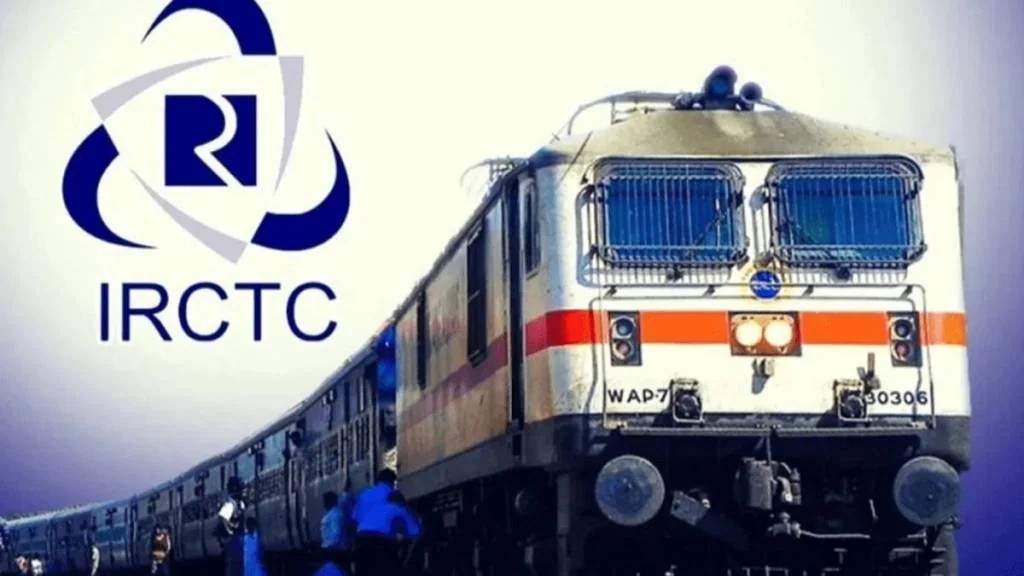
As per the latest guidelines, only Aadhaar-authenticated IRCTC users can book reserved train tickets between 8 AM and 10 AM on the first day of booking. Indian Railways new rule: Aadhaar must for first 15 minutes of IRCTC ticket booking from Oct 1 according to a release by the Ministry of Railways, this move aims to ensure genuine users receive the benefits of the reservation system whilst preventing misuse by unauthorised individuals
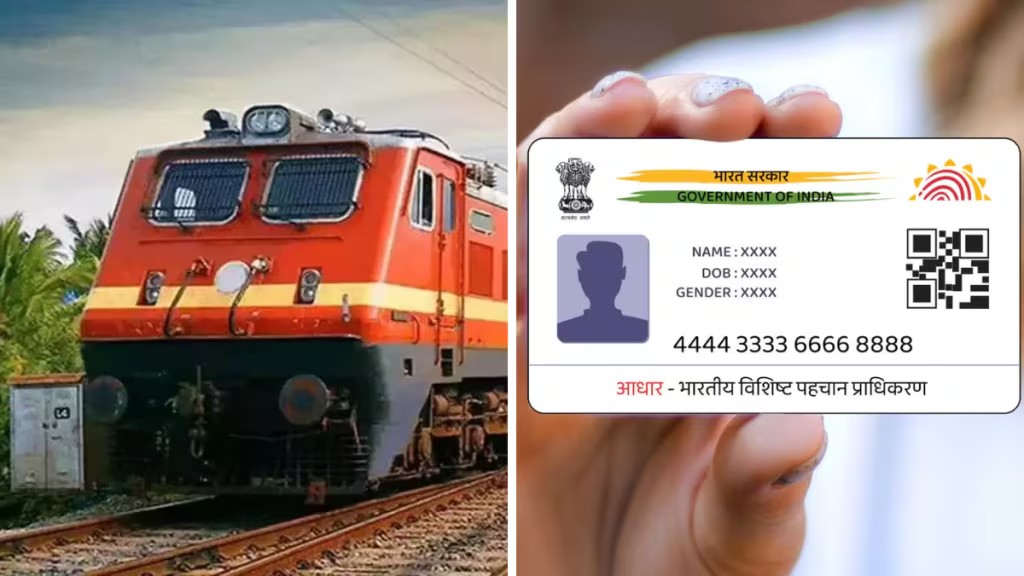
IRCTC online ticket booking rule change: Aadhaar authentication mandatory from October 1 to book tickets in first 15 minutes how this microcap is riding India’s railway and defence push his microcap grew revenues from Rs 18 crore in FY21 to Rs 124.5 crore in FY25, with profits at Rs 22.7 crore and margins above 20%. It is targeting Rs 47,000 crore in railway and defence opportunities by FY30, though working capital stress, dependence on Indian Railways and margin slippage remain risks. The stock has already surged. Is there more to come?
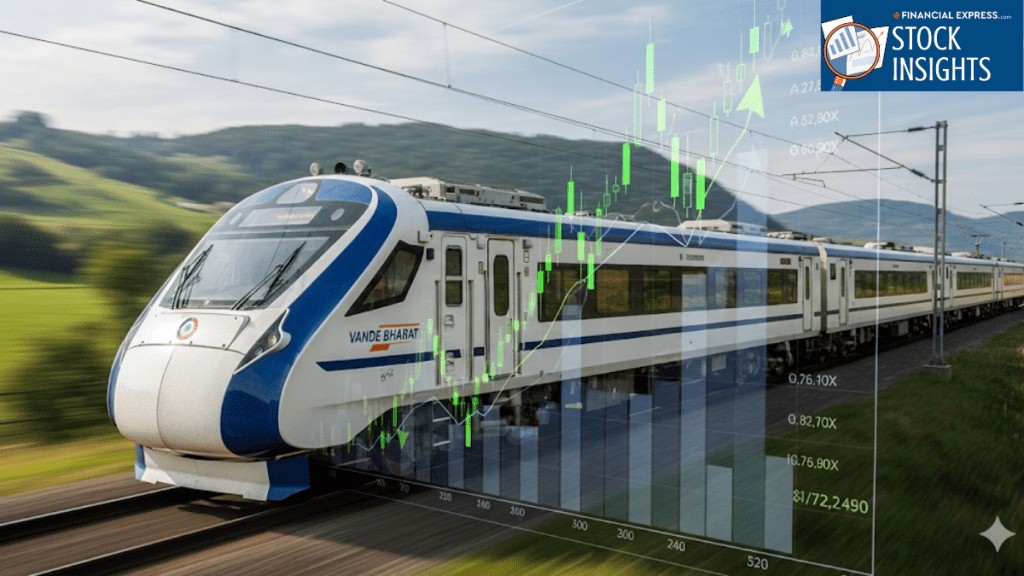
Execution cycles are long, payments are tied up in working capital and more than 80% of revenue still comes from Indian Railways. Every few years, the Indian government announces a big bet on infrastructure. Roads, power, ports, each has had its turn. But off late the spotlight has been firmly on railways and defence. The numbers speak for themselves. The railway capex has crossed Rs 250,000 crore in recent budgets, with targets around full electrification, faster trains and modern rolling stock.
Defence spending too is rising steadily, pushed by Atmanirbhar Bharat and the need to localise technology. A new set of smaller private companies is quietly plugging into these supply chains.
They don’t make the trains or the fighter aircraft. They make the systems and sub-systems that keep them safe and efficient.
One of them is a small/microcap
A steady climb
Concord’s story began in 2011 with battery chargers for railway traction systems.
Hardly glamorous, but it was a foothold. In Indian Railways, credibility depends on approvals from the Research Design and Standards Organisation (RDSO).
Concord kept building that credibility, product by product.
Emergency lighting systems for coaches, brushless fans, couplers, exhaust systems and testing equipment — each addition expanded its reach. Today, the company operates across five verticals: traction, coaching, locomotives, wayside safety equipment and metro technologies.
The metro vertical was added only last year, through a Transfer of Technology agreement with a German partner. The product is an overhead monitoring system, designed to track catenary wires and reduce maintenance. The market may be just Rs 250 crore by 2030, but for a company Concord’s size, that is a meaningful opportunity.
It has also gone the acquisition route. Advanced Rail Controls, now a wholly owned subsidiary, develops embedded electronics for locomotives. Through other joint ventures, Concord is working on collision-avoidance systems like Kavach and diagnostic tools with IISc Bengaluru.
The numbers that matter
Concord’s financial trajectory since FY21 shows how quickly the company has scaled.
Sales have jumped from Rs 18 crore in FY21 to Rs 124 crore in FY25, a nearly sevenfold rise. Operating profit has risen from just Rs 2 crore to Rs 29 crore over the same period, with margins improving from low teens to above 20%. The company carries negligible debt.
The story is clear: from a small supplier just four years ago, Concord has emerged as a debt-free, profitable business with the ability to capture a much larger share of India’s railway and defence opportunity.
For a microcap that listed on the SME exchange in 2022, this is not trivial. It suggests the business is moving from being a parts supplier to a systems provider. That shift matters, because systems contracts are stickier and usually more profitable.
Riding the policy wave
Railway budgets are prioritising safety, speed and electrification, while defence spending is tilted towards local suppliers. Concord is positioned to benefit from both by focusing on less visible but critical parts such as distributed power systems, axle counters, wheel monitoring and overhead diagnostics.
One example is the Distributed Power Wireless Control System (DPWCS), branded “Super Anaconda,” which allows multiple freight locomotives to be coupled and controlled as one. With over 13,000 locomotives already in service and 1,200 more added each year, Concord sees a Rs 2,000 crore retrofit opportunity over the next five years. Another is Kavach, the automatic train protection system. Indian Railways plans to roll it out network-wide, an investment estimated at Rs 40,000 crore. Concord is developing prototypes, has entered the SIL4 (Safety Integrity Level 4) safety certification process and believes it is on track.
All told, the company estimates its addressable market at nearly Rs 47,000 crore by FY30, spread across traction (Rs 550 crore), coaching (Rs 750 crore), metro systems (Rs 250 crore), locomotive electronics (Rs 2,500 crore) and wayside equipment (Rs 43,000 crore). Against FY25 revenue of Rs 124 crore, even a small slice of this market would be transformative.
Thus management has guided for 40–50% annual revenue growth over the next three to five years, with EBITDA (Earnings Before Interest, Taxes, Depreciation and Amortisation) margins in the 22–25% range.
The stated goal is to move from being a product supplier to a full solutions provider for the railway industry, while also exploring emerging areas like hydrogen and battery-based systems. What’s concerning
Growth is the easy part of the story. The more difficult part lies in the details.
What’s concerning is that margins have slipped.
Even as revenue almost doubled, EBITDA margins fell from 26% in FY24 to 23% to FY25. Scale should have helped, but it hasn’t.
Concord attributes this to the integration of Advanced Rail, which is margin dilutive for now. Management says margins will stabilise at 22–25%. Investors will want proof in the next set of numbers.
Another concern is order conversion. An order book of Rs 212 crore looks solid, but the pace at which it can be executed is the real test. Most projects take 12–18 months. Concord insists inflows in FY26 will be significant, but significant is not a number. What matters is whether the backlog continues to build as fast as it is executed.
Kavach is another uncertainty. The opportunity size is huge no doubt. Concord argues this is not a winner-takes-all market. Indian Railways wants multiple vendors. Prototypes are under evaluation and certification is progressing. But delays here could mean missing the first wave of contracts. Working capital has become a sore spot.
The cash conversion cycle ballooned from 70 days in FY24 to 265 in FY25, as inventory piled up to 216 days and debtors stretched to 110.
Management says this is the price of moving into embedded electronics after the Advanced Rail acquisition. These products need imported components, field installation and commissioning before payments are cleared.
The company insists the balance sheet is still clean, with no debt and any funding needs will be weighed carefully between equity and borrowings.
The most obvious risk is scale. At Rs 124 crore of revenue, Concord is still tiny. Doubling revenue every two years, which management says is possible, sounds exciting. It is also ambitious. Execution bandwidth will be tested.
Why it still matters
Despite these concerns, Concord’s story matters because it is not just chasing tenders. It is positioning itself as a systems player in a policy-driven market. That makes it different from dozens of small suppliers. The company has built relationships with marquee clients: Indian Railways’ coach factories, metro corporations and contractors like L&T and Siemens. These relationships are not easily replicated. It has also avoided debt, a discipline that reduces risk for investors.
The bottom line
What it offers investors is exposure to two of the biggest policy themes of the decade: railway modernisation and defence indigenisation, through a single microcap. The opportunity is large, from distributed power systems and axle counters to Kavach, with a potential market size of nearly Rs 47,000 crore by FY30.
The risks are just as clear. Execution cycles are long, payments are tied up in working capital and more than 80% of revenue still comes from Indian Railways. Margins have slipped and the stock has already rerated sharply, climbing from about Rs 300 in late 2022 to nearly Rs 2,600 today, with the PE (Price-to-Earnings ratio) multiple stretching beyond 60. Investors are already pricing in years of strong growth, which raises the bar for delivery. Concord is moving in the right direction. The real test is whether it can turn technology partnerships and a swelling order pipeline into stable, recurring revenues. If it succeeds, the microcap label may not last much longer.
Disclaimer
Note: We have relied on data from www.Screener.in throughout this article. Only in cases where the data was not available, have we used an alternate, but widely used and accepted source of information.
The purpose of this article is only to share interesting charts, data points and thought-provoking opinions. It is NOT a recommendation. If you wish to consider an investment, you are strongly advised to consult your advisor. This article is strictly for educative purposes only.
Manvi Aggarwal has been tracking the stock markets for nearly two decades. She spent about eight years as a financial analyst at a value-style fund, managing money for international investors. That’s where she honed her expertise in deep-dive research, looking beyond the obvious to spot value where others didn’t. Now, she brings that same sharp eye to uncovering overlooked and misunderstood investment opportunities in Indian equities. As a columnist for LiveMint and Equity masters, she breaks down complex financial trends into actionable insights for investors.
Defence stocks take flight: 3 new breakouts to watch the defence theme has roared back on Dalal Street, with the sector index reclaiming 8,000 after a 7% surge last week. What makes this rally special is its broad strength, as every stock in the basket ended higher. Fresh breakouts, strong base formations, and bullish reversals now signal that the sector’s momentum is far from over.

Why these three defence stocks are flashing bullish signals. Both rewarded investors last week, rising 9.51% and 8.68% respectively. But the story doesn’t end there. India’s battery waste goldmine: 6 recycling stocks powering the next big green opportunity
India’s rapidly growing EV market presents a looming ecological crisis from battery waste, but also a multi-billion dollar recycling opportunity. New government rules and an Extended Producer Responsibility system are formalizing the sector, creating a new investment frontier.
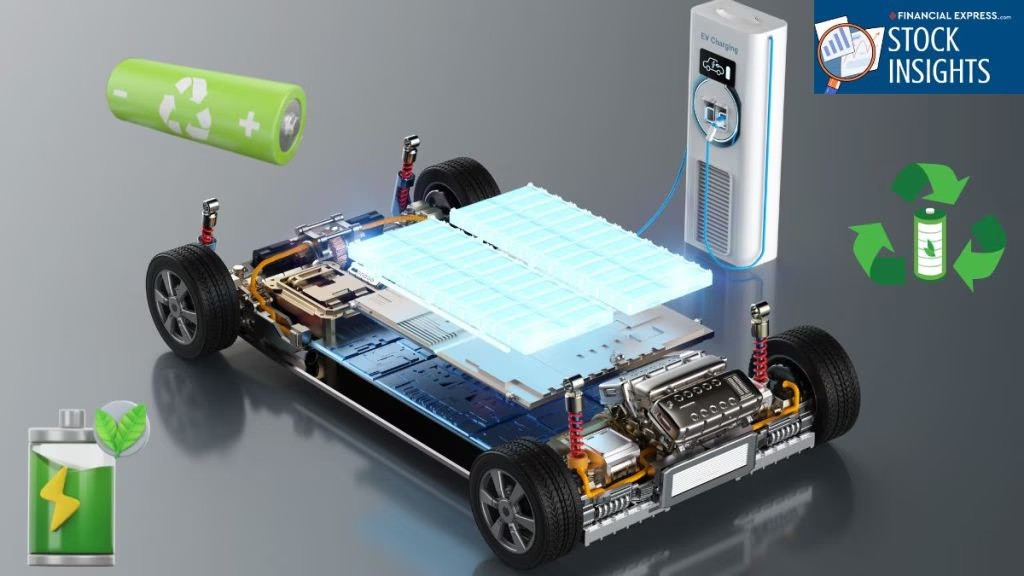
The planet is scrambling to electrify transportation, but not many are posing the tougher question — what happens when all of those EV batteries go dead? Electric cars can reduce tailpipe emissions, but the heaps of lithium-ion trash they leave behind can become the next ecological disaster if not addressed of before it’s too late. Here are the latest stock prices and performance trends of electric vehicles companies.
| Name | Price (Rs) | Change (Rs) | Change (%) | Trend | Volume (000s) |
|---|---|---|---|---|---|
| Mahindra & Mahindra | 3691.60 | 73.60 | 2.03 | 89.11 | |
| Sona BLW Precision Forgings | 490.95 | 8.05 | 1.67 | 269.04 | |
| Eicher Motors | 6897.00 | 93.15 | 1.37 | 6.08 | |
| Minda Corporation | 579.85 | 6.65 | 1.16 | 363.12 | |
| KEI Industries | 3950.00 | 24.10 | 0.61 | 3.92 | |
| CG Power and Industrial Solutions | 735.55 | 4.00 | 0.55 | 27.46 | |
| TVS Motor Company | 3458.60 | 13.30 | 0.39 | 15.41 | |
| Tube Investments of India | 2990.40 | 10.10 | 0.34 | 11.87 | |
| Maruti Suzuki India | 15478.10 | 24.65 | 0.16 | 47.84 | |
| Ashok Leyland | 141.30 | 0.15 | 0.11 | 265.73 | |
| Bajaj Auto | 8726.15 | 9.85 | 0.11 | 5.43 | |
| Bharat Forge | 1316.80 | -0.35 | -0.03 | 10.98 | |
| BSE Sensex | 83216.28 | -94.73 | -0.11 | 0.00 | |
| KPIT Technologies | 1156.30 | -2.80 | -0.24 | 12.05 | |
| Samvardhana Motherson International | 103.75 | -0.25 | -0.24 | 415.28 | |
| L&T Technology Services | 4086.25 | -12.50 | -0.30 | 2.31 | |
| Bosch | 36867.25 | -159.95 | -0.43 | 0.42 | |
| Tata Motors Passenger Vehicles | 405.65 | -2.20 | -0.54 | 238.05 | |
| Hero MotoCorp | 5293.40 | -30.75 | -0.58 | 14.28 | |
| ZF Commercial Vehicle Control Systems India | 12716.00 | -82.55 | -0.64 | 0.09 | |
| Tata Technologies | 673.15 | -4.40 | -0.65 | 82.32 | |
| UNO Minda | 1225.05 | -8.20 | -0.66 | 98.85 | |
| Exide Industries | 377.20 | -2.65 | -0.70 | 118.68 | |
| JBM Auto | 635.15 | -4.95 | -0.77 | 22.67 | |
| Amara Raja Energy & Mobility | 979.00 | -8.45 | -0.86 | 23.62 | |
| Gujarat Fluorochemicals | 3615.65 | -33.90 | -0.93 | 2.60 | |
| RattanIndia Enterprises | 49.26 | -0.51 | -1.02 | 238.06 | |
| Hyundai Motor India | 2328.05 | -25.15 | -1.07 | 34.04 | |
| Tata Elxsi | 5182.65 | -56.85 | -1.09 | 8.24 | |
| Olectra Greentech | 1508.00 | -16.85 | -1.11 | 8.07 | |
| Reliance Industries | 1478.25 | -17.50 | -1.17 | 378.53 | |
| Ola Electric Mobility | 46.79 | -0.79 | -1.66 | 2614.60 | |
| Motherson Sumi Wiring India | 46.81 | -1.08 | -2.26 | 499.18 |
Close to 39% of consumer electronics batteries at end-of-life are never collected, and of those that are, nearly 80% are processed by informal channels, as per an ICEA–Accenture report. The outcome: close to half of recovered batteries never reach formal recycling units. Unchecked, this is a time bomb waiting to explode. But the potential is equally immense. India can open a USD 3.5 billion lithium-ion recycling and manufacturing economy by 2030, generating up to 41,000 jobs, saving millions of gallons of water, and reducing carbon emissions (ICEA–Accenture, 2024). The Battery Waste Management Rules (2022) and Extended Producer Responsibility system are beginning points towards an organized recycling economy. Today, the company operates across five verticals: traction, coaching, locomotives, wayside safety equipment and metro technologies.
The metro vertical was added only last year, through a Transfer of Technology agreement with a German partner. The product is an overhead monitoring system, designed to track catenary wires and reduce maintenance. The market may be just Rs 250 crore by 2030, but for a company Concord’s size, that is a meaningful opportunity.
It has also gone the acquisition route. Advanced Rail Controls, now a wholly owned subsidiary, develops embedded electronics for locomotives. Through other joint ventures, Concord is working on collision-avoidance systems like Kavach and diagnostic tools with IISc Bengaluru. Restrictions on Agents Remain Unchanged
The ministry also confirmed that the current 10-minute restriction on authorised railway ticketing agents for opening day bookings will continue without any modification. This means agents will not be allowed to book tickets during the first 10 minutes of the reservation window, giving individuals a fairer chance at securing seats. Aadhaar Already Mandatory for Tatkal Tickets
The latest rule follows closely after Indian Railways made Aadhaar authentication compulsory for Tatkal ticket bookings, effective July 1, 2025. Under this directive, passengers must complete Aadhaar verification to book Tatkal tickets exclusively via IRCTC’s website or mobile application. The same circular also placed restrictions on authorised railway ticketing agents. The agents cannot book first-day Tatkal tickets during the opening 30 minutes of bookings. This limitation is effective from 10.00 am to 10.30 am for air-conditioned classes and from 11.00 am to 11.30 am for non-air-conditioned classes, the directive stated. Big order win! L&T bags Rs 2,500–5,000 crore Mumbai-Ahmedabad bullet train track order
Larsen & Toubro (L&T) wins a Rs 2,500–5,000 crore order from NHSRCL to build 156 km of high-speed ballastless track for the Mumbai-Ahmedabad High-Speed Rail corridor, deploying Japanese Shinkansen technology. Big order win! L&T bags Rs 2,500–5,000 crore Mumbai-Ahmedabad bullet train track order
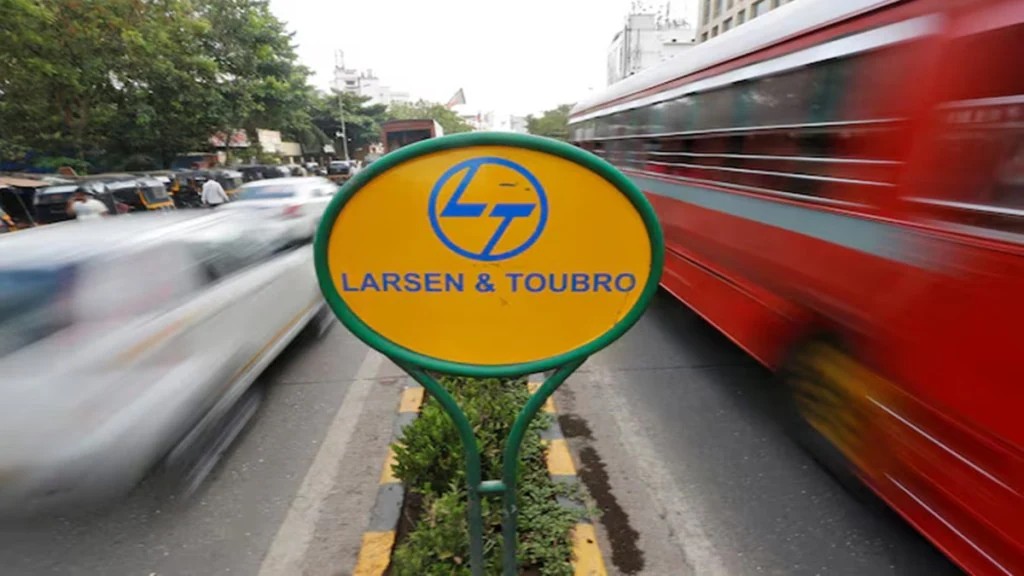
L&T Bags ₹2,500–5,000 Crore Mumbai-Ahmedabad Bullet Train Track Order. Transportation Infrastructure business has secured an order worth Rs 2,500- 5,000 crore from the National High Speed Rail Corporation (NHSRCL) to construct 156 route km of high-speed ballastless track the contract, known as Package T1, covers design, supply, construction, testing, and commissioning of track-works on a Design-Build Lump Sum Price basis. The project stretches from Mumbai’s Bandra-Kurla Complex to Zaroli village in Gujarat. It includes over 21 km of track in underground sections and 135 km on elevated viaducts. According to the company’s regulatory filing, the project is classified as a “large” order. As per L&T’s project classification, large orders range from Rs 2,500 crore to Rs 5,000 crore.
L&T wins second track-work package T1 after T3 to use Japanese Shinkansen technology for high-speed rail
Through regulatory filing, the company announced that the project will adopt Japanese Shinkansen J Slab Track Technology, designed to support speeds of up to 320 kmph. The technology promises better ride quality, higher durability, and easier maintenance.
L&T’s track record in ballastless track projects
L&T is India’s leading player in ballastless track technology. L&T is currently executing similar projects in several Indian metros such as Bengaluru, Chennai, and Mumbai, as well as international projects including Jakarta.
Share price of L&T
Request a Free Demo
Revolutionize your network and security with our AI-powered Universal SASE platform. Protect every edge with security that is built-in, rather than bolted on. Automate and simplify your infrastructure to deliver higher availability and better protection.
![]()
Universal connectivity – securely connect all users devices, locations, and apps across all networks
![]()
Unified platform – single management console with unified policy and data lake built on a single-pass architecture
![]()
AI powered – integrated AI delivers actionable insights for advanced security and network optimization
![]()
Security built-in – converged security and networking built on a Zero Trust foundation
Larsen & Toubro Share Price
LARSEN & TOUBRO
Larsen & Toubro Price Return
| 1 Day | 0.02% |
| 1 Month | 4.05% |
| 3 Months | 6.63% |
| YTD | 5.85% |
| 1 Year | 6.49% |
| 3 Years | 24.35% |
| 5 Years | 32.08% |
| 10 Years | 15.66% |
*Returns over 1 year are CAGR
Larsen & Toubro Ratio Analysis
| Face Value (Rs)2.00 | EPS-TTM (Rs)116.59 | Dividend/Share (Rs)34.00 |
| PE Ratio (x)33.29 | PB Ratio (x)5.59 | EV/EBITDA (x)19.78 |
| Div. Yield (%)0.88 | Beta (1M)0.83 |
Over the last 5 years, the share price of Larsen & Toubro has gained 32.08% CAGR. Over the past year, the corresponding return has been 6.49%.
Larsen & Toubro’s current P/E of 33.29x helps give context to how the market is valuing the stock based on recent earnings and growth expectations. Check out if this stock is part of our Best Construction Stocks Screener.
Larsen & Toubro Peer Comparision
Stock Performance
Ratio Performance
| Name | 1W(%) | 1M(%) | 3M(%) | 6M(%) | 1Y(%) | 3Y(%) | 5Y(%) |
|---|---|---|---|---|---|---|---|
| Larsen & Toubro | -3.71 | 4.05 | 6.63 | 16.84 | 6.49 | 24.35 | 32.08 |
| Rail Vikas Nigam | -3.01 | -9.98 | -8.00 | -6.43 | -33.21 | 84.48 | 76.83 |
| NBCC (India) | -3.45 | 0.71 | 3.42 | 18.21 | 13.87 | 70.95 | 49.14 |
| IRB Infrastructure Developers | -0.80 | 7.08 | -0.80 | -1.48 | -14.80 | 20.16 | 31.87 |
| Afcons Infrastructure | -1.58 | -2.48 | 7.80 | 2.62 | -7.39 | -2.41 | -1.46 |
| Cemindia Projects | 4.65 | 2.44 | 15.85 | 61.91 | 55.95 | 87.77 | 74.79 |
| NCC | -8.03 | -7.53 | -12.02 | -8.61 | -38.45 | 39.54 | 40.68 |
| Welspun Enterprises | -1.86 | 2.61 | 20.61 | 13.59 | 9.98 | 61.33 | 48.75 |
| PNC Infratech | -0.91 | -4.84 | -9.77 | 11.15 | -13.11 | 1.96 | 11.14 |
| Keystone Realtors | -2.92 | -10.53 | -7.00 | 9.47 | -25.41 | -0.54 | -0.32 |
| Ahluwalia Contracts (India) | -6.38 | -9.15 | -6.93 | 4.20 | -15.40 | 28.56 | 31.22 |
| HG Infra Engineering | -2.03 | -1.71 | -6.37 | -18.10 | -31.72 | 15.86 | 37.77 |
| Ashoka Buildcon | -3.16 | 6.61 | 2.68 | 12.00 | -16.77 | 39.11 | 25.65 |
| Man Infraconstruction | -9.10 | -7.96 | -19.00 | -11.36 | -29.36 | 18.04 | 51.55 |
| KNR Constructions | -0.97 | -7.97 | -13.64 | -15.51 | -39.56 | -7.92 | 7.11 |
| Hindustan Construction Company | -7.88 | -3.98 | 1.98 | 5.75 | -34.26 | 23.22 | 40.82 |
| Hubtown | 7.61 | 2.73 | -4.54 | 86.42 | 13.57 | 84.44 | 99.52 |
| Ramky Infrastructure | -4.95 | -5.03 | 12.51 | 35.71 | -4.65 | 29.52 | 82.03 |
| Ajmera Realty & Infra India | -4.64 | 3.24 | 17.37 | 29.44 | 5.74 | 62.14 | 63.72 |
| Marathon Nextgen Realty | -1.50 | 0.82 | -9.52 | 19.59 | -4.82 | 43.89 | 59.05 |
Over the last one year, Larsen & Toubro has gained 6.49% compared to peers like Rail Vikas Nigam (-33.21%), NBCC (India) (13.87%), IRB Infrastructure Developers (-14.80%). From a 5 year perspective, Larsen & Toubro has underperformed peers relative to Rail Vikas Nigam (76.83%) and NBCC (India) (49.14%).
Larsen & Toubro Financials
Consolidated
Standalone
Quarterly P&L
Annual P&L
Balance Sheet
Cash Flow
Income Statement
Ratios